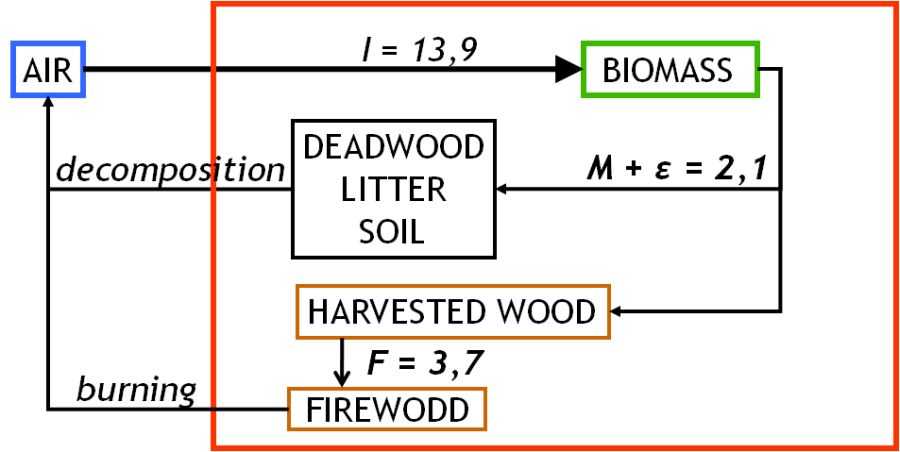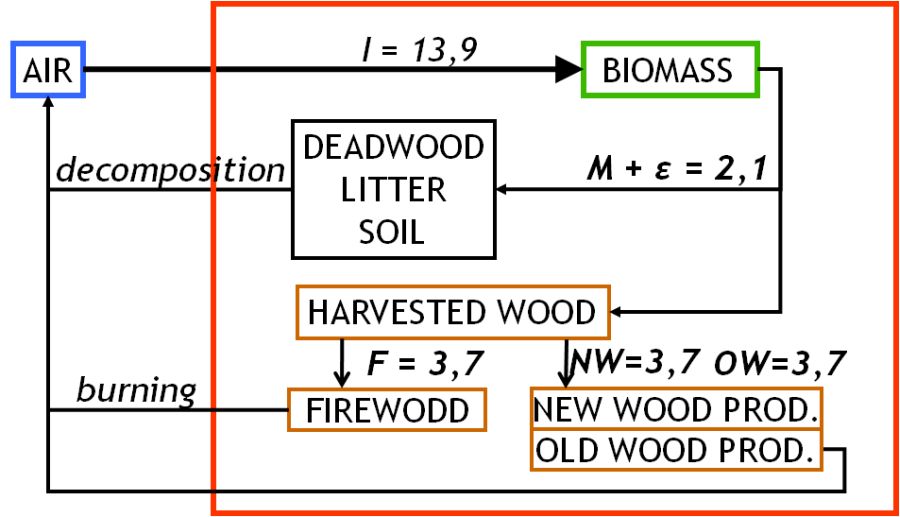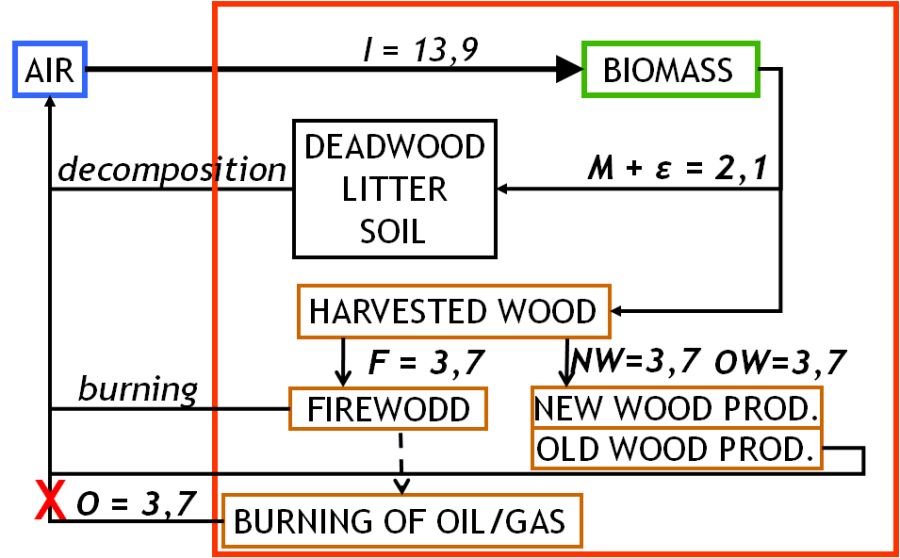
installation
the model.
Scenarios
and References
CASMOFOR
version 7.0
description
ON THE CARBON CYCLE OF FORESTS
CASMOFOR can be used to model the carbon cycle of forests of various size as a function of time. This means that it does not describe the growth and death of single trees, rather, those of a lot of trees, but also all other parts of the forest that contain carbon. The life of all those trees, as well as the changes in the carbon stock of the so called carbon pools can only be described using complex relationships.
These relationships are detailed at the description of the model, as well as that of the functions describing the carbon stock changes and the processes leading to these carbon stock changes.
On this sheet, we summarize the concepts on forest carbon cycle that must be considered at the level of forests, forestry and national economy.
The concept of "forest carbon cycle" means that this cycle is always attached to a system, the issues that most often arise concerning forest carbon sequestration cannot be addressed without defining this system.
To demonstrate this, we list those processes below that can be used to define the system and its border can be delineated (using red lined in the graphs below that include all processes that were covered until that graph). The processes are quantified at the same time at the country level of Hungary in order to see their relative importance in the definition of the system. The reported numbers are annual values for the entire country, and were assessed using official statistics from the National Forestry Database, as well as conversion, expansion and other factors. These and the full description of the calculations are detailed in Somogyi, 2008. For recent estimates on the net CO2 removals and emissions of other greenhouse gases of the Hungarian forests, click here.
The first process is the sequestration of carbon by photosynthesis that leads to the increase of the biomass of trees. This increase can be assess by using current annual increment data of empirical models called forest yield tables. The current annual increment of the Hungarian forests is about 13 million m3 currently, which is approximately equal to a carbon increment (I) of 13,9 million tCO2:

However, forests do not sequester this amount of CO2 because some of it is emitted through the decmoposition of trees that die due to disturbance of the forest, self-thinning or destruction of single trees by pests and pathogens. If also the error of the forest inventory is included here, then we can assume an overall mortality of about 2,1 million tCO2:

All in all so far, the net sequestration is about 11,8 million t CO2. However, not even this carbon-dioxide remains in the forest because some 7 million m3 of wood is harvested (H), which is equivalent to 7,5 million t CO2. If this amount is assumed to be an instant emission (this is justified as this amount leaves the forest), then the annual sequestration of forests is 11,8-7,5=4,3 million t CO2:

As a matter of comparison, this is only about 1/20th of all emissions that were estimated for 2007. If, however, we do not only speak about forests but also forestry and wood industry, then one could say that only that part of H must be accounted for as emissions that is emitted from burning of firewood (T; 3,7 millin t CO2), the rest remain fixed in variour types of wood products. The net annual carbon sequestration of forestry and wood industry this way is about 11,8-3,7=8,1 million t CO2:

However, the calculations are not over yet even at this point. Some of the harvested wood, i.e. harvested wood products, keep carbon fixed for some time. On the other hand, about the same amount of old harvested wood product (paper, old furniture, wood structure of demolished houses etc., R) is burnt each year in other sector (including the residential sector), which is equivalent to a large amount of n t CO2. If we deduct this from the above balance equation than the system of producing and using wood is again decreased by some 3,7 millin t CO2, which means that only some 4,3 millin t CO2 is left in the system defined this way:

Finally, for the sake of completeness, we note that we can make one more step outside the land use sector: if firewood could not be burnt for energy then an equivalent amount of fossile fuel, i.e., oil and gas, had to be burnt, which of course entails CO2 emissions. Without going into the details of how this amount of emissions can be estimated, we only state that the fact that forests can be used to offset fossile fuels deserves attention.

In summary, the forests of Hungary - just like most forests elsewhere - help us mitigate climate change, and the Hungarian forests sequester some 4,3 millin t CO2 each year. Not to forget is, however, that if more wood is harvested in future, which is possible due to the ever-increasing hunger of the human population for resources, or if the health of the forests deteriorated due to climate change, than less sequestration will take place. Moreover, the above calculation only covers biomass, and the carbon cycle of other pools such as soils, litter and deadwood should also be considered. In forestry, these pools can be affected by disturbance and erosion, and can loose substantial amounts of carbon. It is in the interest of forestsry, and of the public at large, to try to avoid increased emissions and try to enhance carbon sequestration.
This webpage was last modified by Zoltan Somogyi 28 Sept 2023.